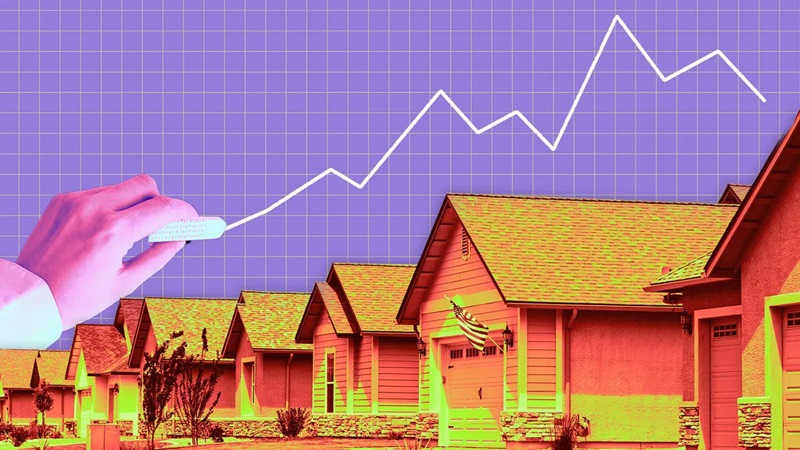Buying a home is one of the biggest decisions in life, and understanding mortgage rates is a key part of the process. Whether you’re buying your first house, refinancing, or just curious, this article will help you learn what mortgage rates are, how they work, and what affects them. We’ll also talk about different types of mortgages and tips to get a better rate.
Table of Contents
What Are Mortgage Rates?
A mortgage rate is the interest you pay on the money you borrow from a lender to buy a home. It is shown as a percentage of the loan amount.
Example:
If you take a $200,000 loan at a 5% mortgage rate, you will pay 5% interest on that amount every year.
The mortgage rate plays a big role in how much you will pay over the life of your loan. A small change in the rate can make a big difference in your monthly payment.
Types of Mortgage Rates
There are two main types of mortgage rates: fixed-rate and adjustable-rate.
Fixed-Rate Mortgage
A fixed-rate mortgage has the same interest rate for the whole loan term (usually 15, 20, or 30 years). Your monthly payments will stay the same.
Pros:
- Easy to budget
- No surprises
Cons:
- Usually starts with a higher rate than adjustable-rate mortgages
Adjustable-Rate Mortgage (ARM)
An adjustable-rate mortgage has a rate that can change over time. It usually starts with a lower rate for a few years, then it can go up or down.
Pros:
- Lower starting rate
- Can save money in the short term
Cons:
- Risk of higher payments later
- Not good if you plan to stay long-term
What Affects Mortgage Rates?
Several factors affect mortgage rates. Some depend on the economy, while others are personal.
The Economy
When the economy is doing well, mortgage rates tend to go up. When the economy slows down, rates often go down. The Federal Reserve also plays a role by setting interest rates for banks.
Inflation
Inflation means prices are going up. Lenders want to make sure the money they get back is worth something. So, higher inflation usually means higher mortgage rates.
Credit Score
Your credit score shows how good you are at paying back money. A higher score usually gets you a lower mortgage rate.
| Credit Score Range | Rate Offer |
|---|---|
| 760 and up | Lowest |
| 700 – 759 | Low |
| 650 – 699 | Medium |
| 600 – 649 | High |
| Below 600 | Very High |
Loan Amount and Down Payment
If you borrow less money and pay more upfront (higher down payment), lenders may give you a better rate.
Loan Term
Shorter loans (like 15 years) often have lower rates than longer ones (like 30 years), but the monthly payment will be higher.
Current Mortgage Rate Trends (2025)
As of early 2025, mortgage rates have been rising due to economic changes and inflation. Here’s a general idea:
- 30-Year Fixed: Around 6.8% – 7.2%
- 15-Year Fixed: Around 6.2% – 6.6%
- 5/1 ARM: Around 6.5% – 7.0%
These numbers may vary daily and by lender, so always check the latest rates.
How to Get the Best Mortgage Rate

There are many ways to get a lower mortgage rate. Here are some helpful tips:
Improve Your Credit Score
Pay your bills on time, reduce your credit card balance, and avoid new debt before applying.
Shop Around
Don’t settle for the first lender. Compare offers from banks, credit unions, and online lenders.
Make a Bigger Down Payment
If you can put down 20% or more, you may get a lower rate and avoid paying for PMI (private mortgage insurance).
Choose a Shorter Loan
A 15-year mortgage often has a lower rate, and you’ll pay off your home faster.
Lock in Your Rate
Once you find a good rate, lock it in with your lender. This means the rate won’t go up while your loan is being processed.
Fixed vs. Adjustable: Which Is Better?
Choosing between fixed and adjustable depends on your plans and budget.
| Feature | Fixed-Rate | Adjustable-Rate |
|---|---|---|
| Stability | Payments stay the same | Payments can change |
| Starting Rate | Higher | Lower |
| Best For | Long-term buyers | Short-term buyers |
| Risk Level | Low | Medium to High |
If you plan to stay in your home for many years, a fixed-rate is usually safer. If you expect to move or refinance soon, an ARM might save you money.
Other Costs to Know About
Mortgage rates are not the only cost. Here are some other things you may need to pay:
Closing Costs
Fees for things like appraisals, title searches, and legal documents. Usually 2%–5% of the loan.
PMI (Private Mortgage Insurance)
If you put down less than 20%, lenders may ask you to pay PMI each month.
Property Taxes and Insurance
These can add hundreds of dollars to your monthly payment.
Refinancing: A Way to Change Your Rate
Refinancing means replacing your current mortgage with a new one—often to get a better rate or shorter term.
When to Refinance:
- Interest rates have dropped
- Your credit score has improved
- You want to change loan types (e.g., ARM to fixed)
But remember, refinancing also comes with closing costs, so be sure the savings are worth it.
Common Questions About Mortgage Rates
Are mortgage rates the same everywhere?
No, rates vary by lender, location, credit score, and loan type.
Can mortgage rates go down after I get the loan?
Not with a fixed-rate loan. With an ARM, rates can go down or up based on the market.
Should I wait for lower rates?
It’s hard to time the market. If rates are good and you’re ready to buy, it’s usually better to act than wait.
How do I find the best rate?
Use online rate comparison tools, talk to multiple lenders, and get pre-approved to see your options.
Final Thoughts: Mortgage Rates Made Simple
Understanding mortgage rates helps you make better choices when buying or refinancing a home. A lower rate can save you thousands of dollars over time.
Remember:
- Know the difference between fixed and adjustable rates.
- Improve your credit score.
- Shop around before choosing a lender.
- Don’t forget about other costs like insurance and taxes.






